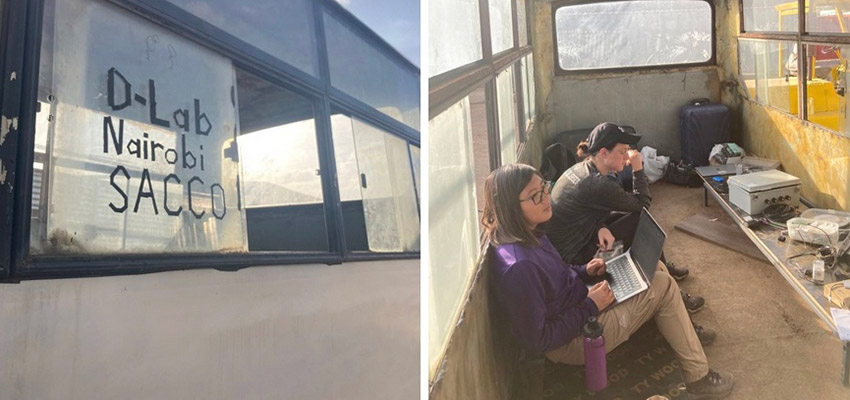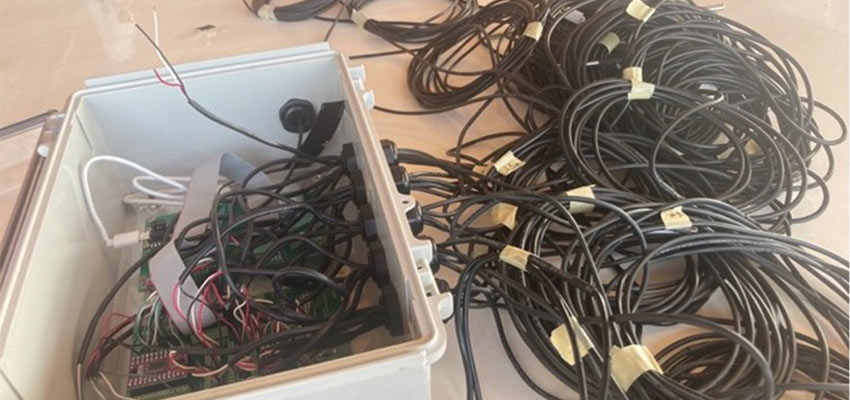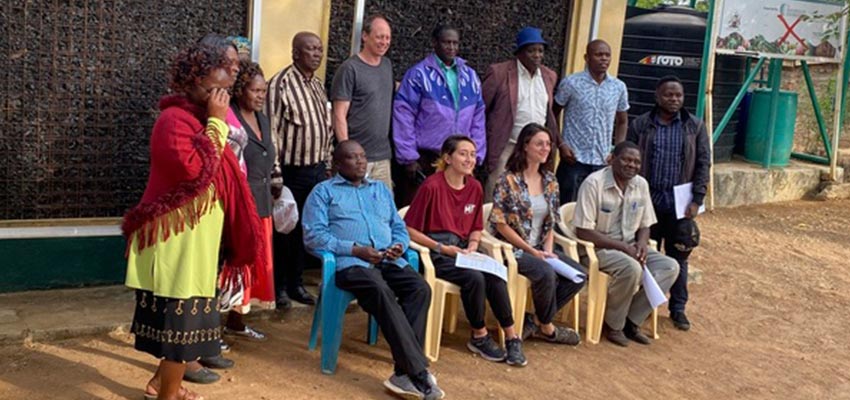
This past June, I had the amazing opportunity to travel with a couple other MIT D-Lab students (Maelle Sardet, Christine Tang, and Ava Dijstelbloem) and D-Lab research engineer Eric Verploegen, (my senior thesis supervisor, instructor for the D-Lab classes Introduction to Energy in Global Development (2.651/EC.711) and Applications of Energy in Global Development (2.652/EC.712), and Ava’s UROP supervisor) to Kenya to work on the final sprint towards getting a full-sized evaporative cooler operational in partnership with Solar Freeze, a Kenyan business that works to increase access to cold storage facilities for rural smallholders farmers in Kenya.
Technical background
Before I get too far into the great progress we made on the trip and the many learning experiences we had, I figured it might be useful to describe evaporative cooling, especially why it has so much potential as a tool to use for vegetable preservation in areas that do not have reliable access to electricity.
The simplest way to understand what evaporative cooling would be to just think about why we sweat. The reason we produce sweat when we are hot is because that thin layer of water, or perspiration, evaporates from our skin and that cools us down. This same concept can be applied by running warm, dry air through a porous wetted material, such that the warm, dry air causes water in the porous material to evaporate, increasing the humidity of the chamber as well as dropping the temperature of the air. When a fan is used to push dry air through wetted material specifically to create this cooler and humid atmosphere, it is called forced evaporative cooling.
Project background
Here’s how it works: fans located atop a shipping container push warm, dry air through an evaporative cooling pad that has been moistened using piping that runs water through the pads These evaporative cooling pads are essentially corrugated cardboard that has been treated to avoid degradation when wet, providing lots of damp surface area for the dry air to flow through and are installed near the roof of a shipping container and act as the entry point for ventilation to each of the cooling chambers within. The more that humid and cool air gets channeled through to stacks of vegetable crates inside the chamber, the more heat is removed and thus the cooler the vegetables become. The particular focus of this chamber is post-harvest cooling, which is very important in hot and dry regions where cooling freshly harvested produce as fast as possible is crucial for reducing food waste. Additionally, by retrofitting shipping containers, the construction of these cooling chambers is cheaper and therefore more accessible to communities that have the least access to traditional cooling chambers, like walk-in refrigerators.
Field work: shipping container evaporative chamber
During the 2022 spring semester, I worked on building an indoor subsection of the shipping container evaporative cooler so that we could tweak different design elements and increase our understanding of reliable ways to collect data on the effectiveness of the cooling achieved by the chamber and the impacts on the produce stored.
For the first week in Kenya, we stayed in Nairobi, working primarily out of a construction yard where the shipping container was being worked on. Maelle, Christine, Eric, and I worked primarily on the plumbing and controls, since those were our areas of expertise, while some of the structural retrofitting work was getting finalized.

During this first week, a main objective was making sure we had all the components that would be needed, as, once we were on site sourcing would get much harder. We needed both plumbing materials (piping and joints) as well as some electronic components. (Fun fact: Kenya has a different voltage than the U.S. so finding motor controllers that would work for the fans required lots of searching.) The search for these components took us to the city center a number of different times, which was a fun new experience. The city center is a very crowded and hectic place that made for a number of afternoons hopping around different stalls in streets that sold all sorts of specific components (some did rave LEDs and sound systems; others did miscellaneous parts for different home electronics).
Besides sourcing materials, we also prioritized getting a lot of the sensors organized and getting on the same page about the state of and advancements needed in the logic for the controls that will be used in the chamber. This involved getting acclimated to the waterproof storage boxes we would be using as well as laying out how we would bundle different sensors and finalizing the layout in the microcontroller. We also took time this week to conduct some user interviews, which I’ll talk about later.
For the second week, we left Nairobi and went to the hot(ter) and dry region of Turkana, where our primary focus was setting up Christine and Ava’s summer projects, one of which is also evaporative cooling, but instead of retrofitted shipping containers, they are hoping to find locally available alternatives to clay pot coolers for use by households and small vegetable vendors. While helping get them situated and working on collecting relevant materials for their summer work, we also kept doing all of the electronic work we could so that the third week would go as streamlined as possible. This mostly consisted of a lot of debugging for the microcontroller as well as testing all the sensors to ensure they were properly wired, connected, and we knew the necessary wire lengths for their installation locations.


For our third and final week we headed back south, this time to the installation site of the container, near Kibwezi, a town in Makueni County. During the second week, while we were in Turkana, more structural progress was made on the container, and it was transferred from Nairobi to its final destination near vegetable markets along Mombasa Road. This last week was the final sprint, and we had our work cut out for ourselves. Between finalizing the cuts and connections for the plumbing to running all the sensors and installing all the electronics boxes, it was a hectic construction zone where there were all sorts of things happening all at once (welding, plumbing, electrical, masonry, painting). There was even the occasional cow or goat visit from the roaming cattle of the town! All in all, it was an amazingly rewarding experience to get to the end of the week and have an up-and-running evaporative cooling chamber that can be autonomously (or, if desired, manually) controlled as well as be able to collect reliable data on the temperature and humidity condition of both the interior and exterior of the chamber that could be accessed from anywhere anytime online.
Field work: general evaporative chamber (user interview heavy)
Another aspect of the project I enjoyed was getting to conduct user interviews with people who are involved with farming in a variety of different ways – farmers who initially harvest the produce, transporters that get produce to markets, and vendors who sell the produce. Getting to sit down and chat with the people whose livelihood relies on minimizing post-harvest waste was very impactful and helped put the whole project into perspective and also gave us an idea of not only the challenges they face, but also the current solutions that they are implementing and their true needs.


About the author
Gaby Alvarez Perez '22 (mechanical engineering) first came to D-lab to take Introduction to Energy in Global Development as it was a requirement for the energy studies minor during her first year at MIT. She really enjoyed the class and later took another D-Lab class, D-Lab: Design. In fall of 2021, she UROP-ed with D-Lab research engineer Eric Varploegen, working on this evaporative cooling project. She started out focused more on modeling approaches for the thermodynamics of the system, and then, during the January Independent Activities Period, she started working on the construction of the subsection of the chamber mentioned in the post, which became the subject of her senior thesis.

